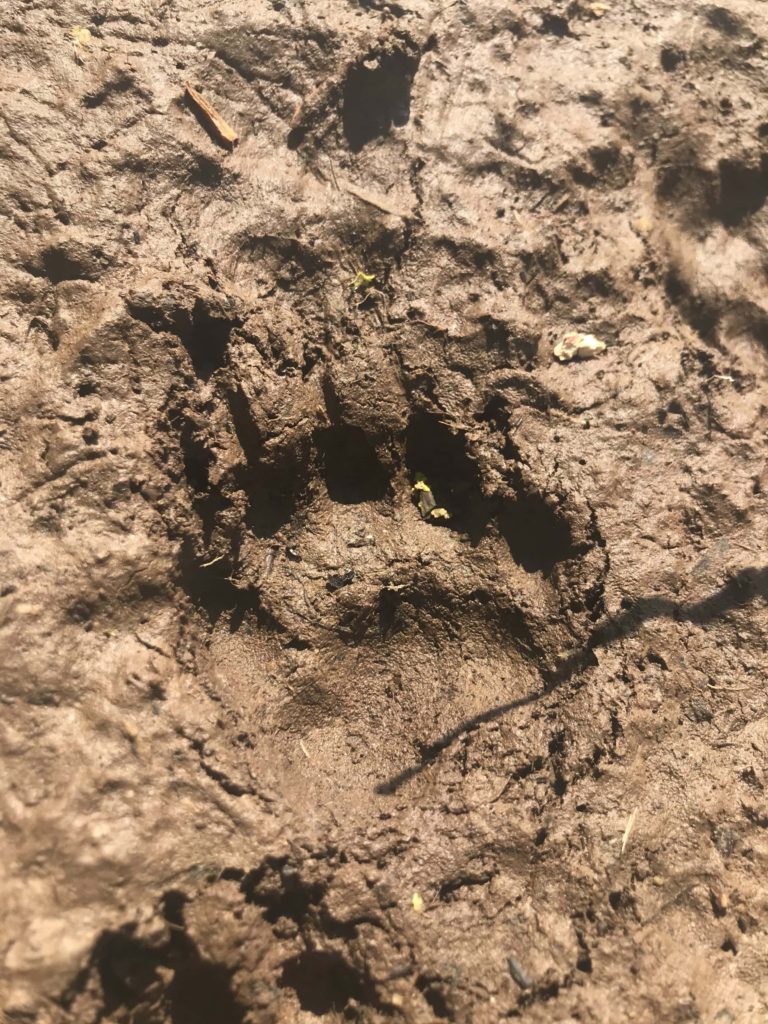Badger Detectives
There’s something slightly magical about badgers. Though they’re very common across the UK, I can probably count on one hand the amount of times I’ve actually seen one.
That said, they leave enough clues across the countryside to make badger detecting a great mini adventure! But how do you find a badger? Read our clues below and get ready for a badger quest!
Did you know?
- Badgers are omnivores and can eat up to 200 worms in one night!
- They live underground in setts. Some setts can be up to 100 meters long and have over 50 entrances!
- Badgers mark their territories with scent. This includes leaving great big poos around their territories to warn other badgers off!
Learn more about badgers and watch some incredible footage on the Badger Trust.
FOLLOW THE BADGER CLUES:
1. Badger Sett
Badger setts (large underground burrows) are always exciting to find. They can be anywhere – keep your eyes peeled in woodland, fields, along river banks, or even just off pathways! Look for large holes going deep into the ground. There will usually be more than 1 hole.
To know if the set is ‘active’ ie in use, check for signs of fresh soil having been dug backwards out of the sett. This shows that the badgers have been doing a bit of house cleaning!
So as not to disturb the badgers, make sure you don’t get too close. The Badgers Trust recommends you stay 10 meters away to give safe space to the badgers. Luckily you can see all the Badger sett activity from that far away!

How do we know it’s badgers? This can be tricky as foxes, rabbits, and hares also live underground. Badger setts can be over 100 years old and sometimes badgers will move out while rabbits and foxes move in! So to confirm it’s a badger, we need to find more clues….
2. Badger tracks
Searching for animal tracks is great fun! Whether you see badger, fox, deer, rabbit, or hedgehog prints, you know that you’re looking at the exact place where a wild animal walked not long ago and that’s quite a magical feeling. Try and picture what they were doing at the time!
For identifying animal tracks, we use the Field Studies Council’s brilliant mammal tracks and signs guide. For a badger, look for a wide central pad with 5 toe pads with long claws.


These can often be seen in that freshly dug soil just outside the sett. We also like to look in any squelchy patches of mud that we come across to check if a badger has been close by, especially near water where the badger might have been having a drink.
3. Poo!
One very easy way to track a badger is by finding its poo! Badgers dig shallow holes in the ground, called latrines, where they like to poo. They’ll keep coming back to the same spot so you’ll often see lots of poos stacked on top of each other and these poos are BIG! Badger poo looks a little like dog poo – in fact, I used to think it was dog poo – but badger poo will sometimes have evidence of berries or even be slimy if the badger has eaten lots of worms! Try poking it with a stick to see what’s in there. We love the Woodland Trust’s Poos and Clues Swatch book to help us identify animal clues.

Badgers will dig their latrines on the edges of their territory to tell others that this is where they live. That means that if you’ve come across holes full of badger poo, you must be near the sett!
4. Trails
Another clear way to track a badger is to look for a trail. Much like humans on paths and roads, badgers will use the same trails to get around. Look for a well-trodden path of trampled grass across a field or a badger-sized hole in a hedge (known as a smeuse). This will likely mean that you’re on a badger path! Follow the track as far as you can to see where it leads!
5. Markings
If you look really closely, you’ll see that badgers often scratch the trees near their sett with their claws, leaving their scent behind.
6. Can you see a Badger?
This is tricky! But if you’re patient, and quiet you might have a chance to see a badger. Find a spot to sit and observe that is within eyesight of an active sett but far enough away not to disturb the badgers. Make sure you sit downwind from the sett – badgers have a very strong sense of smell and won’t come out if they think you’re there! Enjoy the creeping darkness and wait to see what comes out. Even if you don’t see a badger, you might see some other amazing things.

Alternatively, we use a night camera to film the badgers overnight. It’s really amazing to enter their world for a while!
Preparation:
- Have a good think about where badgers might be before setting out on your quest. Though there are many badgers, searching on river banks and in woodland might be an easier find!
Kit List:
- No specific kit needed for badger detecting but some things might help
- Poos and clues book
- Magnifying glass to look closely at the scratches (and poo!?)
If you love wildlife and mini adventures, why not Track a Tawny Owl or learn from new bird songs?
Love adventure? Find exciting gifts for adventurous children in the Go Wild Go West shop.
